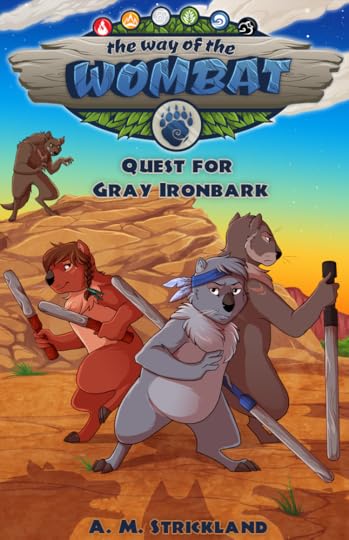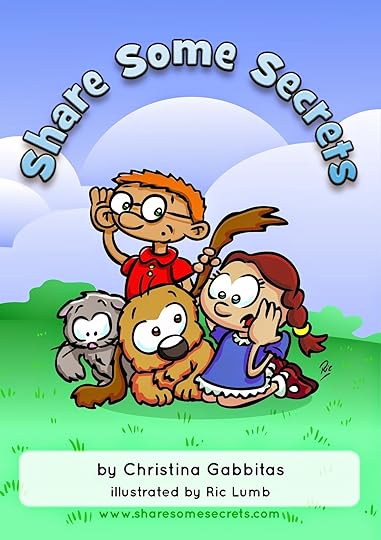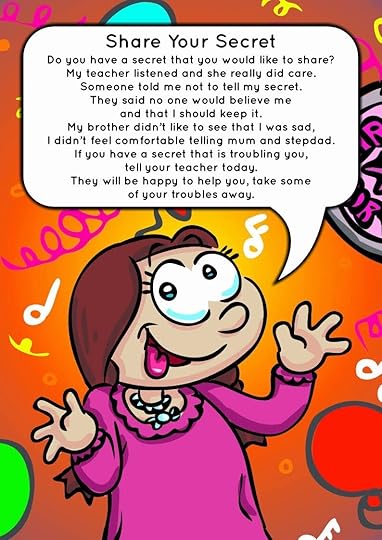Sherry Alexander's Blog, page 9
January 3, 2015
2015 CHILDREN'S BILL OF RIGHTS
Numerous organizations throughout the world have issued their own Bill of Rights for Kids, this is mine. There are only five, but if they were given to each child, think what the world might look like.Kids Bill of Rights
1. The right to be loved
Every child, regardless of who they are or what age they are, has an innate right to be loved. Defined as an "intense feeling of deep affection", kids yearn for love. It is a deeply rooted desire born not only in kids, but in all of us. Mother Teresa said, "The hunger for love is much more difficult to remove than the hunger for bread." Given her statement, and the plight of children all over the world, the simplest way that I can see for easing a child's pain is to love him or her.
2. The right to food
Each year, 2.6 million kids die as a direct result of not having enough food to eat. 2.6 million! Some kids go days without a meal. Most of us would not know what to do if we had to go longer than 8 hours without putting food in our bellies. MarketWatch estimates that 40 percent of the food bought by consumers in the U.S. is thrown away, yet 1 in 5 kids in America go to bed hungry every night. None of this makes sense. What can we do to help? Donate to your local foodbank! And, if you are better off than most, donate to a national organization such as Feeding America , or an international one like Stop Hunger Now .
3. The right to clean water
When I talk about clean water, I am not only talking about drinking water. Clean water is needed for cooking, for cleaning, for sanitation, and for bathing. According to WaterAid.org, "Over 500,000 children die every year from diarrhea caused by unsafe water and poor sanitation." if you want to help, check out The Water Project.
4. The right to safe shelter
1.3 million children in American public schools are homeless according to the Department of Education. Many of these kids live in shelters, but a far greater number live on the street, in a car, or in an abandoned building. I hate to think what the number is worldwide. How can a child grow to her or his potential without a place to call their own that is safe and warm? Yes, we all hear stories about homeless kids who go to college and become successful. However, that is the exception not the norm. In reality, 13 kids die on American streets every day. Want to learn more? Check out Stand Up For Kids or Coalition for the Homeless. Or better yet, look for opportunities to reach out to the homeless in your area.
5. The right to be protected
Kids cannot protect themselves. They suffer from abuse, bullies, exploitation, and neglect, just to mention of few. They look to adults to help them, protect them, and take care of them. Laws need to be strengthen world-wide to protect children so they are no longer preyed upon. We have protection for animals, insects, and birds, so why not our children. Yes, there are agencies who respond when reports are made regarding the ill-treatment of kids, but that is not where the problem lies. It lies in the heart of the caregiver/parent. What makes someone care more for his/her self than the child? I don't have the answer, but I hope that someday every child, everywhere is protected from the bad side of life.
1. The right to be loved
Every child, regardless of who they are or what age they are, has an innate right to be loved. Defined as an "intense feeling of deep affection", kids yearn for love. It is a deeply rooted desire born not only in kids, but in all of us. Mother Teresa said, "The hunger for love is much more difficult to remove than the hunger for bread." Given her statement, and the plight of children all over the world, the simplest way that I can see for easing a child's pain is to love him or her.
2. The right to food
Each year, 2.6 million kids die as a direct result of not having enough food to eat. 2.6 million! Some kids go days without a meal. Most of us would not know what to do if we had to go longer than 8 hours without putting food in our bellies. MarketWatch estimates that 40 percent of the food bought by consumers in the U.S. is thrown away, yet 1 in 5 kids in America go to bed hungry every night. None of this makes sense. What can we do to help? Donate to your local foodbank! And, if you are better off than most, donate to a national organization such as Feeding America , or an international one like Stop Hunger Now .
3. The right to clean water
When I talk about clean water, I am not only talking about drinking water. Clean water is needed for cooking, for cleaning, for sanitation, and for bathing. According to WaterAid.org, "Over 500,000 children die every year from diarrhea caused by unsafe water and poor sanitation." if you want to help, check out The Water Project.
4. The right to safe shelter
1.3 million children in American public schools are homeless according to the Department of Education. Many of these kids live in shelters, but a far greater number live on the street, in a car, or in an abandoned building. I hate to think what the number is worldwide. How can a child grow to her or his potential without a place to call their own that is safe and warm? Yes, we all hear stories about homeless kids who go to college and become successful. However, that is the exception not the norm. In reality, 13 kids die on American streets every day. Want to learn more? Check out Stand Up For Kids or Coalition for the Homeless. Or better yet, look for opportunities to reach out to the homeless in your area.
5. The right to be protected
Kids cannot protect themselves. They suffer from abuse, bullies, exploitation, and neglect, just to mention of few. They look to adults to help them, protect them, and take care of them. Laws need to be strengthen world-wide to protect children so they are no longer preyed upon. We have protection for animals, insects, and birds, so why not our children. Yes, there are agencies who respond when reports are made regarding the ill-treatment of kids, but that is not where the problem lies. It lies in the heart of the caregiver/parent. What makes someone care more for his/her self than the child? I don't have the answer, but I hope that someday every child, everywhere is protected from the bad side of life.
Published on January 03, 2015 14:55
December 28, 2014
CHILD ABUSE SERIES: The Death of a Child
No one wants to think about the death of a child. I know I don't. But when I started researching the facts for this series, I was startled to learn that 5 kids die from abuse each and every day in the U.S., and that number is greatly under reported. Why are these deaths under-reported? First, it is not always easy for medical professionals to determine whether or not a child has been abused. Yes, there are certain injuries such as traumatic brain injuries to infants from shaken baby syndrome, or unusual fractures that only occur from bending or twisting, or deep bruising and cuts left by belts, switches, or whatever was handy at the moment, that immediately cause doctors to launch a child abuse investigation. However, there are many cases of criminal neglect that are never reported to an investigator. Second, most states only report the deaths of children who are already in the system. If a child is not being monitored by social services, then the death is not included in the statistics.
What do the statistics show? They identify the victims as the most vulnerable among us. According to ChildHelp:
80% were not old enough to attend kindergartenChildren age two or younger account for more than 70% of the deathsAt least one parent was involved in 80% of all deathsThe United States has one of the worst record among the industrial nations
Children do not have to die! Child abuse can be stopped. Parents and caregivers can get help. But--yes there is a but, parents and caregivers need to understand what constitutes child abuse and then they need to reach out for help. There is also something WE can do. Share your concerns with family, friends, and teachers; email your congressman or congresswoman, and ask them to increase funding for programs that help parents break the abuse cycle; get involved with organizations like ChildHelp; speak up when you suspect abuse; talk to your school administrators about including programs on child abuse at your school; and, reach out to your community.
For more information, check out ChildHelp.
What do the statistics show? They identify the victims as the most vulnerable among us. According to ChildHelp:
80% were not old enough to attend kindergartenChildren age two or younger account for more than 70% of the deathsAt least one parent was involved in 80% of all deathsThe United States has one of the worst record among the industrial nations
Children do not have to die! Child abuse can be stopped. Parents and caregivers can get help. But--yes there is a but, parents and caregivers need to understand what constitutes child abuse and then they need to reach out for help. There is also something WE can do. Share your concerns with family, friends, and teachers; email your congressman or congresswoman, and ask them to increase funding for programs that help parents break the abuse cycle; get involved with organizations like ChildHelp; speak up when you suspect abuse; talk to your school administrators about including programs on child abuse at your school; and, reach out to your community.
For more information, check out ChildHelp.
Published on December 28, 2014 08:00
December 22, 2014
MIDDLE GRADE NOVEL COVER REVEAL: The Way of the Wombat
The Way Of The Wombat: The Quest for Gray Ironbark
COVER REVEAL
Author: AdriAnne Strickland
Release Date: February 2, 2015
Reading Level: Middle Grade
Publisher: WhomBatz, LLC

Synopsis:
Which Way would you follow?When Laz, a young wombat, goes from playing a game with his friend Kita in their idyllic tribal village to witnessing the nightmare of a Tasmanian devil attack, he reacts in the only way he can: he fights back. He accidentally kills a devil while trying to save his sister, but his sister is still taken captive. To make matters worse, the tribal elders banish Laz, Kita and Zeeg—the three youths who fought back—for failing to follow the way of the wombat.Frustrated and adrift, the three friends embark on a quest through red rocky deserts and deep eucalyptus jungles to discover their own way. With a cheerful koala warrior as a guide and a wise platypus as their trainer, they hope to survive long enough to find a legendary weapon that could save their tribe and Laz’s sister from the devils. But danger lurks around every tree…Find your own Way at WhomBatz.com!
Goodreads:https://www.goodreads.com/book/show/23615882-the-quest-for-gray-ironbark
Pre-Order Link:http://www.amazon.com/Way-Wombat-Quest-Gray-Ironbark-ebook/dp/B00Q5VNBGI/
About The Author: AdriAnne Strickland was a bibliophile who wanted to be an author before she knew what either of those words meant. She shares a home base in Alaska with her husband, but has spent two cumulative years living abroad in Africa, Asia, and Europe. While writing occupies most of her time, she commercial fishes every summer in Bristol Bay, because she can't seem to stop. Her debut YA sci-fi/fantasy, WORDLESS, launched in 2014 from Flux Books. THE WAY OF THE WOMBAT is her first foray into the world of middle grade fantasy adventure. Connect with her on Twitter, Facebook, or over at her website.
AdriAnne Strickland was a bibliophile who wanted to be an author before she knew what either of those words meant. She shares a home base in Alaska with her husband, but has spent two cumulative years living abroad in Africa, Asia, and Europe. While writing occupies most of her time, she commercial fishes every summer in Bristol Bay, because she can't seem to stop. Her debut YA sci-fi/fantasy, WORDLESS, launched in 2014 from Flux Books. THE WAY OF THE WOMBAT is her first foray into the world of middle grade fantasy adventure. Connect with her on Twitter, Facebook, or over at her website.

Prize Ships to US Only.
Must be 13+ To Enter1 Winner will receive a finished copy of the The Way Of The Wombat: The Quest for Gray Ironbark and a WhomBat Thorn in their choice of color, red, blue or black.
a Rafflecopter giveaway
COVER REVEAL
Author: AdriAnne Strickland
Release Date: February 2, 2015
Reading Level: Middle Grade
Publisher: WhomBatz, LLC

Synopsis:
Which Way would you follow?When Laz, a young wombat, goes from playing a game with his friend Kita in their idyllic tribal village to witnessing the nightmare of a Tasmanian devil attack, he reacts in the only way he can: he fights back. He accidentally kills a devil while trying to save his sister, but his sister is still taken captive. To make matters worse, the tribal elders banish Laz, Kita and Zeeg—the three youths who fought back—for failing to follow the way of the wombat.Frustrated and adrift, the three friends embark on a quest through red rocky deserts and deep eucalyptus jungles to discover their own way. With a cheerful koala warrior as a guide and a wise platypus as their trainer, they hope to survive long enough to find a legendary weapon that could save their tribe and Laz’s sister from the devils. But danger lurks around every tree…Find your own Way at WhomBatz.com!
Goodreads:https://www.goodreads.com/book/show/23615882-the-quest-for-gray-ironbark
Pre-Order Link:http://www.amazon.com/Way-Wombat-Quest-Gray-Ironbark-ebook/dp/B00Q5VNBGI/
About The Author:
 AdriAnne Strickland was a bibliophile who wanted to be an author before she knew what either of those words meant. She shares a home base in Alaska with her husband, but has spent two cumulative years living abroad in Africa, Asia, and Europe. While writing occupies most of her time, she commercial fishes every summer in Bristol Bay, because she can't seem to stop. Her debut YA sci-fi/fantasy, WORDLESS, launched in 2014 from Flux Books. THE WAY OF THE WOMBAT is her first foray into the world of middle grade fantasy adventure. Connect with her on Twitter, Facebook, or over at her website.
AdriAnne Strickland was a bibliophile who wanted to be an author before she knew what either of those words meant. She shares a home base in Alaska with her husband, but has spent two cumulative years living abroad in Africa, Asia, and Europe. While writing occupies most of her time, she commercial fishes every summer in Bristol Bay, because she can't seem to stop. Her debut YA sci-fi/fantasy, WORDLESS, launched in 2014 from Flux Books. THE WAY OF THE WOMBAT is her first foray into the world of middle grade fantasy adventure. Connect with her on Twitter, Facebook, or over at her website.
Prize Ships to US Only.
Must be 13+ To Enter1 Winner will receive a finished copy of the The Way Of The Wombat: The Quest for Gray Ironbark and a WhomBat Thorn in their choice of color, red, blue or black.
a Rafflecopter giveaway
Published on December 22, 2014 05:21
December 9, 2014
Child Abuse Series: Why Is Emotional Abuse Difficult To Identify?
When a child is physically abused, there is visual evidence of the injury. Various degrees of bruising and broken bones are just a few of the numerous injuries that can be attributed to child abuse. However, child abuse does not always cause physical injury. Some abuse is emotional, and psychological, social, emotional, and cognitive injuries are very difficult to identify. So, what is emotional abuse. The accepted definition in most circles is defined as an ongoing pattern of behavior on the part of parents and/or caregivers that is detrimental to a child's welfare, development, and psychological well-being. The old saying, "Sticks and stones may hurt my bones, but words will never hurt me," is far from true. Sure kids often resort to name calling when they are upset, and usually as long as it is not a case of bullying, the incident is quickly forgotten. But when a child is constantly belittled, rejected, or even terrorized, the words do hurt, and the hurt is far deeper than a bruise. We have all heard of the cases that hit the news where kids have been imprisoned in a room or a closet. There may be no physical harm, but the emotional trauma to the child is lifelong and tragic. But, how you may ask, does the use of words constitute abuse? Put the thought of a child aside for a minute. Think about a new puppy. If that puppy is adopted by a caregiver who yells at, threatens it, constantly calls it "bad dog", and does not pet it, hold it, or even smile at it, can you expect that dog to be loving with its new master or anyone else who comes near it? No. Now think of a child in the same situation. The child suffers constant humiliation, belittling, and bullying. He/she is told daily that he/she is worthless, no good, or bad. Or, what if he/she is threatened with violence, even though it may never be carried out, or is forced to watch one of his/her siblings being beaten. There may be no visible scars that readily tell of the abuse, but you can bet there are hidden ones and they are displayed through behavior.
A child who is emotionally abused may appear withdrawn, have low self-esteem, or act out their pain through violence or aggression. He/she may develop slowly and are often way behind the skill level of other kids their age. While it is the professionals--doctors, nurses, counselors, teachers, and police officers who will see the signs before any of us do, it is important that we treat children with respect. That means no name calling, accepting them for who they are, encouraging them to grow and develop, provide positive attention, hugs, smiles, and constant reassurance. So, have you hugged your child today?
A child who is emotionally abused may appear withdrawn, have low self-esteem, or act out their pain through violence or aggression. He/she may develop slowly and are often way behind the skill level of other kids their age. While it is the professionals--doctors, nurses, counselors, teachers, and police officers who will see the signs before any of us do, it is important that we treat children with respect. That means no name calling, accepting them for who they are, encouraging them to grow and develop, provide positive attention, hugs, smiles, and constant reassurance. So, have you hugged your child today?
Published on December 09, 2014 10:49
November 29, 2014
Child Abuse Series: SHARE SOME SECRETS
Child abuse takes many forms. Some children suffer neglect, while others suffer bodily injury through violence. In America alone, Child Protective Services confirmed 686,000 children suffered some form of abuse in 2012.
However, those figures only represent the number of kids' cases that were actually reported and investigated. What about the kids who are abused, but are too afraid to tell? Should they keep their secret? How do you tell a child which secrets are good and which ones are bad? British author, Christina Gabbitas, may have the answer.
 "I realize that this is a very sensitive subject and is a huge challenge, but is something I feel very passionate about," says Christina. "We teach our children to look out when crossing the road, and we teach them to swim, to keep them safe in water. I want to educate children from a young age, about the differences between good and bad secrets, and to give them the confidence to speak out."
"I realize that this is a very sensitive subject and is a huge challenge, but is something I feel very passionate about," says Christina. "We teach our children to look out when crossing the road, and we teach them to swim, to keep them safe in water. I want to educate children from a young age, about the differences between good and bad secrets, and to give them the confidence to speak out."
Since secrets can be a sensitive subject for parents, Christina decided to make an audio of her book, and to provide it free. She wanted to reassure parents, caregivers, and teachers that "there is nothing scary for children to read within the book."
You can listen to it yourself first, then share it with your child. Or, listen first, then buy a copy to share with your child. Here is the link: http://www.sharesomesecrets.com/


However, those figures only represent the number of kids' cases that were actually reported and investigated. What about the kids who are abused, but are too afraid to tell? Should they keep their secret? How do you tell a child which secrets are good and which ones are bad? British author, Christina Gabbitas, may have the answer.
 "I realize that this is a very sensitive subject and is a huge challenge, but is something I feel very passionate about," says Christina. "We teach our children to look out when crossing the road, and we teach them to swim, to keep them safe in water. I want to educate children from a young age, about the differences between good and bad secrets, and to give them the confidence to speak out."
"I realize that this is a very sensitive subject and is a huge challenge, but is something I feel very passionate about," says Christina. "We teach our children to look out when crossing the road, and we teach them to swim, to keep them safe in water. I want to educate children from a young age, about the differences between good and bad secrets, and to give them the confidence to speak out."Since secrets can be a sensitive subject for parents, Christina decided to make an audio of her book, and to provide it free. She wanted to reassure parents, caregivers, and teachers that "there is nothing scary for children to read within the book."
You can listen to it yourself first, then share it with your child. Or, listen first, then buy a copy to share with your child. Here is the link: http://www.sharesomesecrets.com/


Published on November 29, 2014 21:42
November 18, 2014
Wednesday Rave: Vanquished by Katie Clark
It is with great pleasure that I introduce you to an author I admire, Katie Clark, and her debut novel--Vanquished.
 Thank you for having me today! I’m thrilled to introduce your readers to my debut novel, Vanquished. People are always asking me how I got the idea for Vanquished, and since it’s a story I love telling I am happy to share it.
Thank you for having me today! I’m thrilled to introduce your readers to my debut novel, Vanquished. People are always asking me how I got the idea for Vanquished, and since it’s a story I love telling I am happy to share it.
This wasn’t an easy idea. It came to me in bits and pieces over the course of a few years. It started with the main character, Hana. I was always thinking about this girl. This strong but vulnerable girl. She wanted to believe in the life she’d been led to live. She wanted to follow the rules. Except she couldn’t. At that time, I had no idea what brought about her unhappiness or dissatisfaction, I only knew she needed to work toward something more.
Fast forward a year or two, I was given the idea to write a story set in a world where there was no God. No Bible. No religion. Would this world be better? Worse? And how? I had no idea how to make this story happen, but the idea stuck in my head and percolated.
Finally, the two halves came together to make a whole. One day I was sitting in church (yes, I admit I was daydreaming), and it hit me. These two stories were the same story. Hana was dissatisfied because she suspected there was more than met the eye in her city, and she set out to find it. Her mom was sick, and she needed answers. What she uncovered went way beyond hidden medications and technology—what she found was the truth that the God she’d been told was myth might not be myth at all. The story just flew from there, and it didn’t end for three books!

About Vanquished: When Hana’s mom is diagnosed with the mutation, she is denied the medication that might save her life. Fischer, a medic at the hospital, implies there are people who can help—except Hana’s not sure she can trust him; Fischer is involved in a religious group, and religion has been outlawed for the last hundred years. Hana embarks on a dangerous journey, seeking the answers Fischer insists are available. When the truth is uncovered does Hana stick to what she knows? Or does she join the rebellion, taking a stand against an untrustworthy society?
KATIE CLARK writes young adult speculative fiction, including her dystopian Enslaved Series, made up of Vanquished, Deliverance, and Redeemer. The books released in paperback in September, and will release in ebook form on November 22, 2014. You can connect with Katie at her website http://www.katieclarkwrites.com/ and on Facebook at https://www.facebook.com/pages/Katie-Clark/235090733187928
P.S. Check out the numerous reviews of Katie's book on Amazon and Goodreads. I loved it!
 Thank you for having me today! I’m thrilled to introduce your readers to my debut novel, Vanquished. People are always asking me how I got the idea for Vanquished, and since it’s a story I love telling I am happy to share it.
Thank you for having me today! I’m thrilled to introduce your readers to my debut novel, Vanquished. People are always asking me how I got the idea for Vanquished, and since it’s a story I love telling I am happy to share it.This wasn’t an easy idea. It came to me in bits and pieces over the course of a few years. It started with the main character, Hana. I was always thinking about this girl. This strong but vulnerable girl. She wanted to believe in the life she’d been led to live. She wanted to follow the rules. Except she couldn’t. At that time, I had no idea what brought about her unhappiness or dissatisfaction, I only knew she needed to work toward something more.
Fast forward a year or two, I was given the idea to write a story set in a world where there was no God. No Bible. No religion. Would this world be better? Worse? And how? I had no idea how to make this story happen, but the idea stuck in my head and percolated.
Finally, the two halves came together to make a whole. One day I was sitting in church (yes, I admit I was daydreaming), and it hit me. These two stories were the same story. Hana was dissatisfied because she suspected there was more than met the eye in her city, and she set out to find it. Her mom was sick, and she needed answers. What she uncovered went way beyond hidden medications and technology—what she found was the truth that the God she’d been told was myth might not be myth at all. The story just flew from there, and it didn’t end for three books!

About Vanquished: When Hana’s mom is diagnosed with the mutation, she is denied the medication that might save her life. Fischer, a medic at the hospital, implies there are people who can help—except Hana’s not sure she can trust him; Fischer is involved in a religious group, and religion has been outlawed for the last hundred years. Hana embarks on a dangerous journey, seeking the answers Fischer insists are available. When the truth is uncovered does Hana stick to what she knows? Or does she join the rebellion, taking a stand against an untrustworthy society?
KATIE CLARK writes young adult speculative fiction, including her dystopian Enslaved Series, made up of Vanquished, Deliverance, and Redeemer. The books released in paperback in September, and will release in ebook form on November 22, 2014. You can connect with Katie at her website http://www.katieclarkwrites.com/ and on Facebook at https://www.facebook.com/pages/Katie-Clark/235090733187928
P.S. Check out the numerous reviews of Katie's book on Amazon and Goodreads. I loved it!
Published on November 18, 2014 19:57
November 16, 2014
Child Abuse Series: Who Determines Abuse?
The recent cases of child abuse in the news has a lot of parents wondering just what constitutes child abuse. ChildHelp defines child abuse as "action or failing to act, causes injury, death, emotional harm or risk of serious harm to a child." So who determines if a child has been abused?
In the case of Minnesota Vikings running back, Adrian Peterson, it was the court. Now remember he "whipped" the child with a tree branch or switch. The boy suffered deep bruises and open cuts to his legs, thighs, buttocks and scrotum. Other cases that have hit the media also rely upon the court system to determine whether or not a child has been abused.
However, each case is different and so is the determination. In Peterson's case, there was a plea bargain that reduced the felony child abuse charge to a misdemeanor reckless assault charge. In other cases, parents and caregivers have received long jail sentences for whipping their children with everything from a belt to a boat oar. Why the disparity in the way most cases are handled? I think the problem lies in the definition.
All spankings--and I am both a victim and a perpetrator--are not all bad. There are times when a single swat with the palm of the hand on the butt carries more weight, in my opinion, than all the "No, no, no"'s in the world. However, in the definition of child abuse there is no determination regarding what constitutes "injury". That determination is left up to the doctors, lawyers, courts, and the state the child lives in, and that is why there is wide disparity in sentencing abusers, and an even greater disparity in the rights of children.
Perhaps it is time to clarify the definition so that everyone in every state is on the same page, so that children receive the legal protection they deserve. For more information, visit Child Help at https://www.childhelp.org/child-abuse/
In the case of Minnesota Vikings running back, Adrian Peterson, it was the court. Now remember he "whipped" the child with a tree branch or switch. The boy suffered deep bruises and open cuts to his legs, thighs, buttocks and scrotum. Other cases that have hit the media also rely upon the court system to determine whether or not a child has been abused.
However, each case is different and so is the determination. In Peterson's case, there was a plea bargain that reduced the felony child abuse charge to a misdemeanor reckless assault charge. In other cases, parents and caregivers have received long jail sentences for whipping their children with everything from a belt to a boat oar. Why the disparity in the way most cases are handled? I think the problem lies in the definition.
All spankings--and I am both a victim and a perpetrator--are not all bad. There are times when a single swat with the palm of the hand on the butt carries more weight, in my opinion, than all the "No, no, no"'s in the world. However, in the definition of child abuse there is no determination regarding what constitutes "injury". That determination is left up to the doctors, lawyers, courts, and the state the child lives in, and that is why there is wide disparity in sentencing abusers, and an even greater disparity in the rights of children.
Perhaps it is time to clarify the definition so that everyone in every state is on the same page, so that children receive the legal protection they deserve. For more information, visit Child Help at https://www.childhelp.org/child-abuse/
Published on November 16, 2014 10:45
November 9, 2014
A New Series: Child Abuse
An Oregon mother of a six-year-old boy calls 9-1-1 to say, "I just threw my son over the Yaquina Bay Bridge". His crime-autism. A mother of a three-year-old boy in Pennsylvania along with possibly two others, tie him to a chair, beat him with whips, curtain rods, and other sharp and blunt instruments then hang him by his feet and beat him again. His crime-not eating his breakfast. A four-year-old girl is beaten to death by her mother. Her crime-she spilled her mother's lotion. And, a six-week-old infant dies of multiple internal injuries and a fractured skull at the hands of his father. His crime-crying.
All you have to do is listen to the evening news or open a newspaper to find another parent or caregiver who has taken the life of a child by abuse. According to Childhelp.org, someone reports the abuse of a child every 10 seconds in the United States. And, it is estimated that as many as 50 to 60 percent of all child deaths are directly related to child abuse, but not reported as such on the death certificate.
This new series will look at: the statistics both here and around the world: who the abusers are: the various types of abuse--physical, emotional, mental, and sexual: what it does to children who survive abuse: the role bullying plays in abuse; why the cycle often continues; why not all punishment is abuse; and, what we can do to stop the abuse that is killing our future generation.
All you have to do is listen to the evening news or open a newspaper to find another parent or caregiver who has taken the life of a child by abuse. According to Childhelp.org, someone reports the abuse of a child every 10 seconds in the United States. And, it is estimated that as many as 50 to 60 percent of all child deaths are directly related to child abuse, but not reported as such on the death certificate.
This new series will look at: the statistics both here and around the world: who the abusers are: the various types of abuse--physical, emotional, mental, and sexual: what it does to children who survive abuse: the role bullying plays in abuse; why the cycle often continues; why not all punishment is abuse; and, what we can do to stop the abuse that is killing our future generation.
Published on November 09, 2014 12:44
November 2, 2014
When a Child Feels Alone at School, Maybe a Buddy Bench Will Help
It was lunch recess and the playground was filled with happy kids running, jumping, sliding, swinging, and asking me every five minutes if it was lunchtime yet when I noticed a first grade girl digging her toes in the sawdust. Her head was down and her shoulders were shaking a bit. I watched her for a few minutes waiting for a friend to run up to her and ask her to play. But no one did. That's when I introduced myself.
"Hi, my name is Sherry. Those are great digging shoes you have. I wish I had a pair like them."
Her blonde head tilted to the side for a second, and then she looked up exposing cheeks streaked with tears. After wiping her face with her sleeve, she told me her name was Kelsey (not her real name). Then she told me something that struck my heart.
"I'm all alone. I don't have any friends, and nobody will play with me."
Kelsey's problem was easy to fix. My grand daughter's class was on the playground, too. All I had to do was point her and her friends in Kelsey's direction, and within minutes all the girls were laughing and playing together. No one cared that Kelsey was a first grader and they were third and fourth graders. The only thing that mattered was that they had all found a new friend.
But Kelsey's sadness at feeling alone made me wonder how many other kids are in the same position. How many feel left out, or that no one will play with them, or need help with something that is bothering them, or just need to know that someone cares? How can they let other kids and parents and teachers know that a friend is needed? Then I remembered an article I found a while back on a second grader who created a "buddy bench" with his class.
The buddy bench is a seat on the playground where a child can sit when they feel alone, left out, are in need of a friend, or need help of some kind. The bench is always placed in the open which makes it easy to spot a child who uses it. It can be created as part of a school anti-bullying campaign, so that all the kids understand why it is there and what to do when they see someone sitting on it. In order to really make it important to the kids, the kids design and paint it themselves. Then, it is up to teachers to reiterate to their classes the purpose of the buddy bench, and to make sue that every new student knows why it is there.
I have found that kids have an inexhaustible capacity for kindness. True there are some who have not developed the art of kindness. And, we all know that bullies exist. But when given the chance, most kids are more than willing to reach out to someone when they know they need it.
The key, however, is recognizing the need. Young kids, especially in the lower grades, are busy expending pent up energy during recess. They don't see the little girl standing off to the side alone. But if there was a buddy bench, they would know immediately that someone was feeling alone.
"Hi, my name is Sherry. Those are great digging shoes you have. I wish I had a pair like them."
Her blonde head tilted to the side for a second, and then she looked up exposing cheeks streaked with tears. After wiping her face with her sleeve, she told me her name was Kelsey (not her real name). Then she told me something that struck my heart.
"I'm all alone. I don't have any friends, and nobody will play with me."
Kelsey's problem was easy to fix. My grand daughter's class was on the playground, too. All I had to do was point her and her friends in Kelsey's direction, and within minutes all the girls were laughing and playing together. No one cared that Kelsey was a first grader and they were third and fourth graders. The only thing that mattered was that they had all found a new friend.
But Kelsey's sadness at feeling alone made me wonder how many other kids are in the same position. How many feel left out, or that no one will play with them, or need help with something that is bothering them, or just need to know that someone cares? How can they let other kids and parents and teachers know that a friend is needed? Then I remembered an article I found a while back on a second grader who created a "buddy bench" with his class.
The buddy bench is a seat on the playground where a child can sit when they feel alone, left out, are in need of a friend, or need help of some kind. The bench is always placed in the open which makes it easy to spot a child who uses it. It can be created as part of a school anti-bullying campaign, so that all the kids understand why it is there and what to do when they see someone sitting on it. In order to really make it important to the kids, the kids design and paint it themselves. Then, it is up to teachers to reiterate to their classes the purpose of the buddy bench, and to make sue that every new student knows why it is there.
I have found that kids have an inexhaustible capacity for kindness. True there are some who have not developed the art of kindness. And, we all know that bullies exist. But when given the chance, most kids are more than willing to reach out to someone when they know they need it.
The key, however, is recognizing the need. Young kids, especially in the lower grades, are busy expending pent up energy during recess. They don't see the little girl standing off to the side alone. But if there was a buddy bench, they would know immediately that someone was feeling alone.
Published on November 02, 2014 20:19
October 26, 2014
Does Bullying Actually Fit the Definition
Bullying is defined as "repeated, unwanted, and aggressive behavior" to gain power or control of another person, but does that definition really encompass what our kids face in school. You decide.Seven year old, Kymber, was an outgoing first grader who loved her friends, her family, and most of all, her school. She was known by her teachers as a kind student who loved to learn, and who came to school everyday with a smile.
However, when Kymber's family moved to a new town, a new State, and a new school, things changed. The first few days went by without incident, but soon things started to change. She lost her enthusiasm for learning, and her teacher complained that Kymber lacked the ability to participate in class. At home, Kymber retreated more often to her room. She became withdrawn, quiet, and shy. Half-way through the year, she began complaining of stomach aches, and begged to stay home from school. Her parents talked to her, to her teachers, to the school counselor, and to the family doctor. No one had an answer for the drastic change in Kymber's attitude.
It wasn't until her father's new position required him to move the family again that the reason became apparent. Three days into the new school, Kymber started participating in class. Three weeks in, her smile returned.
What happened? Kymber, herself, explained it during a round circle her teacher held on bullying. The teacher asked each student to if they had every experienced bullying. This is what Kymber said. "I didn't like my old school. No one would play with me. Here, everyone plays together. I don't stand in a corner and wait for the bell to ring. Is that bullying?"
What do you think? Is shunning a type of bullying? Does the definition of bullying need to change? I think it does. Bullying no longer just involves the big kid with a bad attitude pushing smaller kids into garbage cans or lockers. It involves isolating, aggression, name calling, emotional trauma, and all the other things that can occur when one kid or a group of kids decide to set another kid apart.
While Kymber's name has been changed, this is truly an account of one child and how she felt when she was shunned by her fellow students. It is also true that maybe the kids at the other school did not understand how the simple act of not including Kymber at recess impacted her life. The point is, no child should ever feel isolated, shunned, or afraid at school. Next week, I will share what some kids are doing to make sue this does not happen at their school.
However, when Kymber's family moved to a new town, a new State, and a new school, things changed. The first few days went by without incident, but soon things started to change. She lost her enthusiasm for learning, and her teacher complained that Kymber lacked the ability to participate in class. At home, Kymber retreated more often to her room. She became withdrawn, quiet, and shy. Half-way through the year, she began complaining of stomach aches, and begged to stay home from school. Her parents talked to her, to her teachers, to the school counselor, and to the family doctor. No one had an answer for the drastic change in Kymber's attitude.
It wasn't until her father's new position required him to move the family again that the reason became apparent. Three days into the new school, Kymber started participating in class. Three weeks in, her smile returned.
What happened? Kymber, herself, explained it during a round circle her teacher held on bullying. The teacher asked each student to if they had every experienced bullying. This is what Kymber said. "I didn't like my old school. No one would play with me. Here, everyone plays together. I don't stand in a corner and wait for the bell to ring. Is that bullying?"
What do you think? Is shunning a type of bullying? Does the definition of bullying need to change? I think it does. Bullying no longer just involves the big kid with a bad attitude pushing smaller kids into garbage cans or lockers. It involves isolating, aggression, name calling, emotional trauma, and all the other things that can occur when one kid or a group of kids decide to set another kid apart.
While Kymber's name has been changed, this is truly an account of one child and how she felt when she was shunned by her fellow students. It is also true that maybe the kids at the other school did not understand how the simple act of not including Kymber at recess impacted her life. The point is, no child should ever feel isolated, shunned, or afraid at school. Next week, I will share what some kids are doing to make sue this does not happen at their school.

Published on October 26, 2014 11:21



